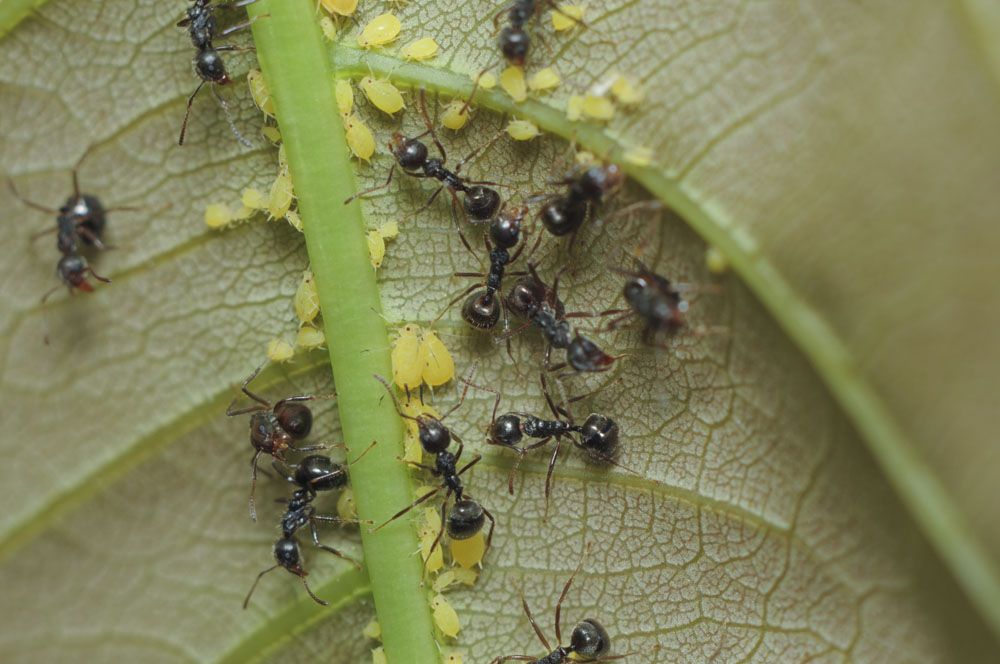
Predatory Ants – Formicidae
Predatory Ants
Family: Formicidae
Common Name: Predatory ants, Ants.
Appearance: Predatory ants can range from 1-25 mm in length and have a dark red-brown color. They have elbowed antennae, and their thorax and abdomen are attached through peduncle (a small segment between thorax and abdomen). Legs and wings (if present) are attached to the thorax. Ants like humans also have castes. The reproductive queens and males in one group and sterile females in another group. The queens and males reproduce to continue the species, while sterile females are the workers.
Host Plants or Food: Predatory ants are general feeders preying upon a variety of small insects, eggs, and larvae.
Territory: Found Worldwide
Mode of Damage: Beneficial Garden Insect. They do not damage the plants and prey on small insects and plant pests.
Habits and Life History:
Predatory ants, like other ants, have a very well-managed social structure. They have an elite class consisting of fertile queens and males that mate to produce new ants and a working class.
There are three stages in their colony development, starting from the founding stage.
In the founding stage, a virgin fertile female (Queen) leaves her nest and mate with a few males. The males die soon after mating.
The female builds her nest in the soil or under the bark where she lays eggs. The eggs hatch into larvae and are fed completely by the mother until they mature into adults.
Now the second stage begins where the Queen devotes herself to egg-laying only, and the larvae are fed and looked after by the workers. The workers also enlarge the nest.
When the colony becomes large enough, it enters into the third and last stage, the reproductive stage. In this stage, new fertile queens and males are produced, which continue the new cycle.
Predatory ants undergo complete metamorphosis: Egg, Larvae, Pupa, and Adults.
